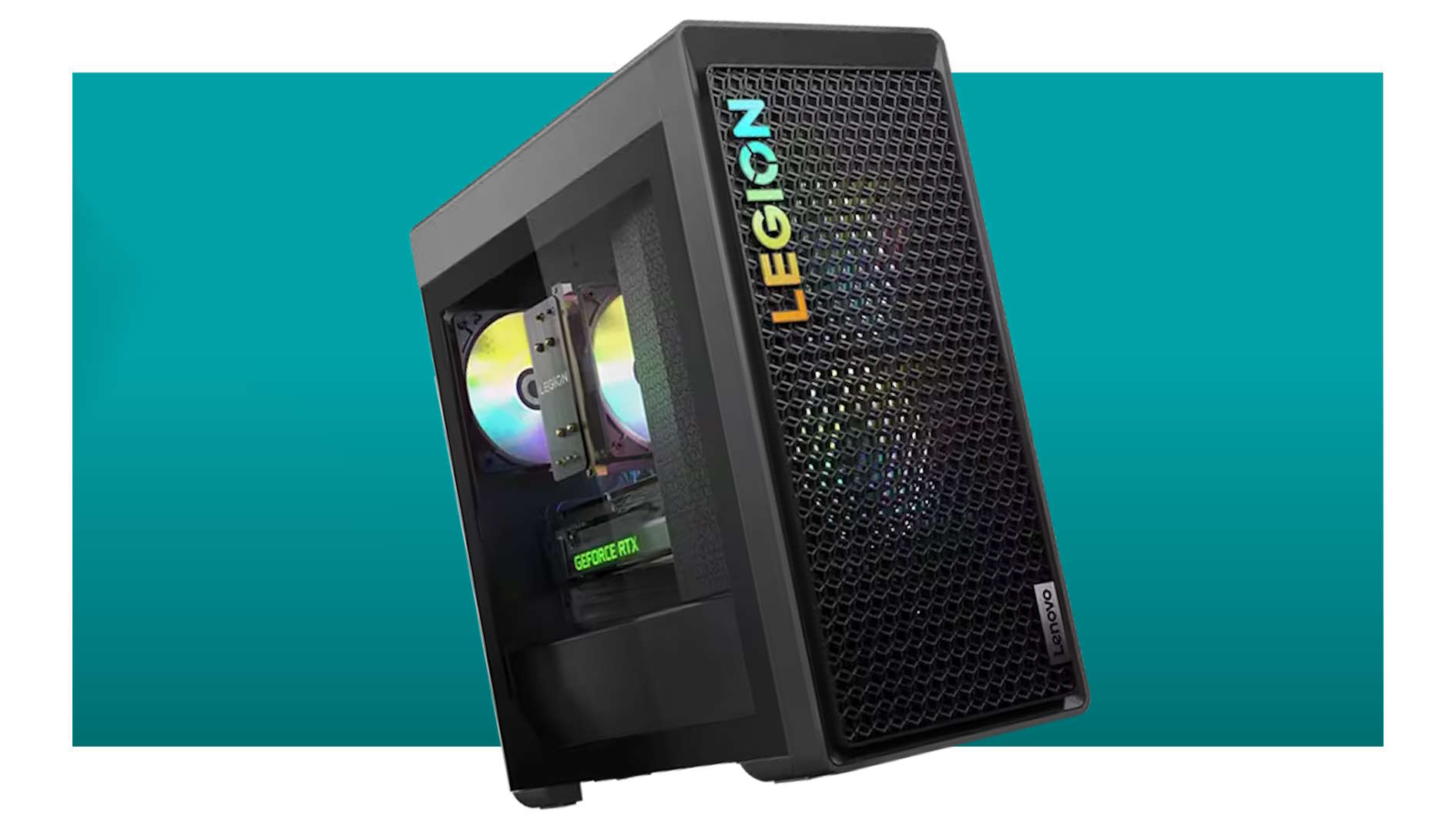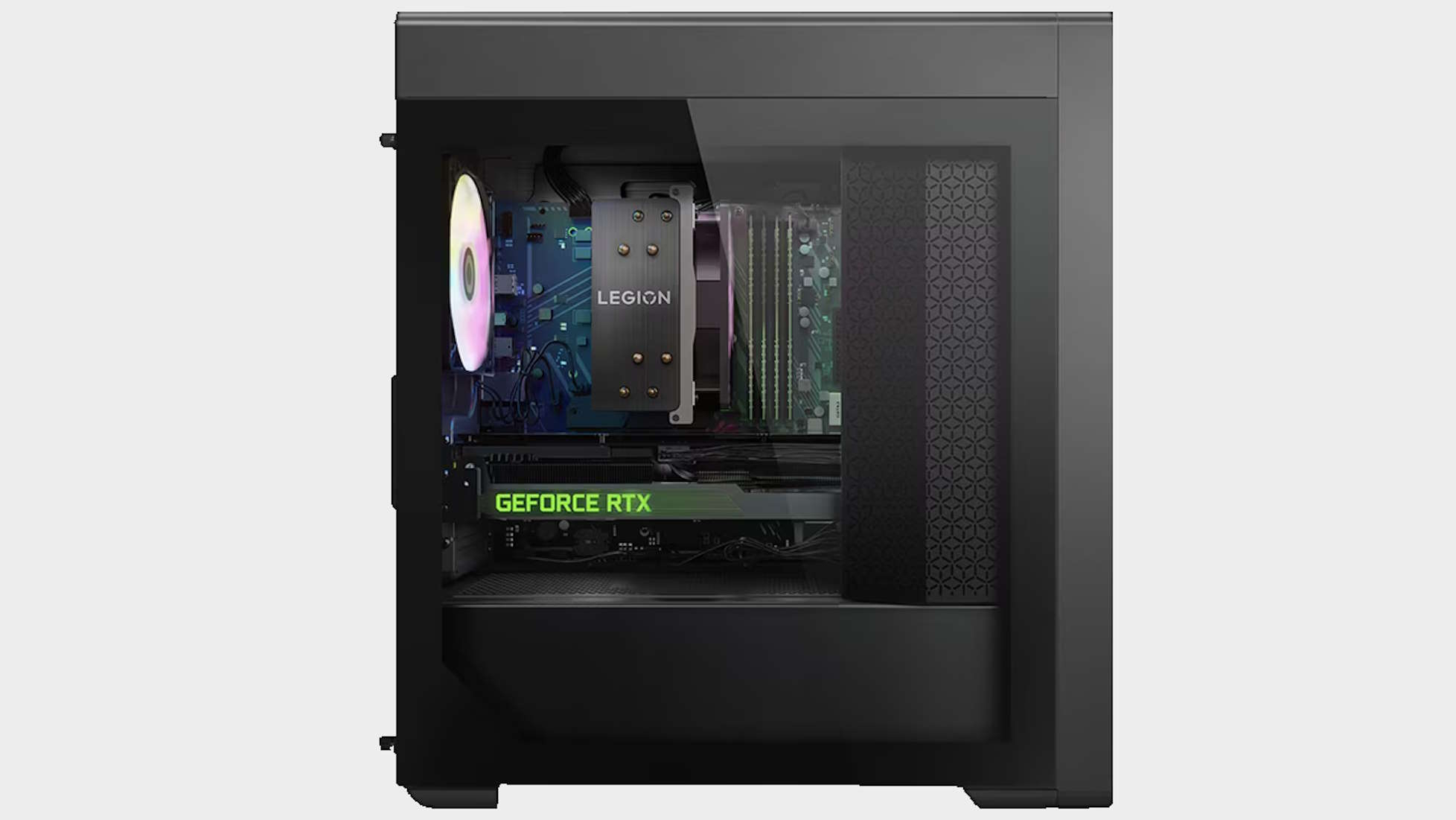I challenge you to find a better gaming PC deal than this RTX 4070 Ti Lenovo machine
The fully specced Legion Tower 5 is on sale with a $700+ discount, making it just $1,567.

Lenovo Legion Tower 5 | Ryzen 7 7700 | Nvidia RTX 4070 Ti Super | 32GB DDR5-5200 | 1TB SSD | $2,299.99 $1,567.49 at Lenovo (save $732.50)
Normally we'd expect a machine at this price to come equipped with a standard RTX 4070 or RTX 4070 Super, but here you get the RTX 4070 Ti Super, which is much more powerful. Add in a Ryzen 7 7700, 32 GB of decent DDR5 memory and a 1 TB Gen 4 SSD and what you get is a blazing fast gaming PC, for much less than you'd expect.
There are pretty much always compromises to be made when you're looking for a great deal on a new gaming PC. Maybe you have to suffer with a paucity of storage space, or a weak-heart CPU, or the bare minimum of memory. But hey, if you're getting a discount of over $700 you can deal with a compromise or two, right?
But what if you don't have to? What if you can get a big name gaming PC brand, with a serious high-end spec, and my only slight concern being that a 1TB SSD is still going to get filled up pretty quick?
Well, that's what we have here with the Lenovo Legion Tower 5 gaming PC which is $1,567 at Lenovo.com right now. That's the sort of price that made us do a double take when it came to the RTX 4070 Ti Super at its heart, because for this money we'd expect an RTX 4070 Super at best, and not even an original RTX 4070 Ti.
This is a card using the same GPU as the RTX 4080 and RTX 4080 Super, delivers the full 16GB GDDR6X monty to allay any potentially memory concerns you might have had with the weaker RTX 4070 Ti, and offers excellent 1440p and 4K gaming performance for the money, too.
The prebuilt gaming PC meme, however, is all about that super strong GPU paired with a halfwit CPU and dunce-tier DDR memory. None of that here, where you're getting the excellent AMD Ryzen 7 7700, which is hugely more efficient than the X-series version, and yet will still hit the same speeds with a little simple overclocking should you miss watching clock speed numbers go high.

It's an eight-core, 16-thread chip of Zen 4 chiplet stock, and comes paired with a full 32GB of DDR5-5200 memory. Alongside that is a 1TB SSD, though as I've said that's maybe the only slight weak spot of the full spec, with that sort of capacity now being almost standard and will still fill up quickly given the size of modern games.
Though SSD pricing is going up consistently, so it's not that big a miss not having a 2TB drive built into this system right now.
You could maybe argue the air cooler setup isn't hardcore PC gaming elite gear in a world of all-in-one liquid CPU coolers, but there's still a lot to be said for some big RGB spinning fans. Primarily it's about consistent airflow; the two fans at the front of the rig pull the air in, the CPU fans pull that over the chonky heatsink, and then the rear exhaust fan blows the hot air out the back. In the process you get a lot of air moving across the rest of the components in your rig helping keep the whole thing chill.
Air coolers can be cool, too, kids.
And you also get everything you need to be up and running except a monitor, because it also comes with a keyboard and mouse. Not a great keyboard and mouse, I'll grant you, but you can work up to the best gaming keyboard and the best gaming mouse, right?
So, yeah, this is a big brand gaming PC, that is well specced out, still contains plenty of scope for upgrades (the AMD AM5 CPU socket will still house those new Zen 5 chips that are on their way, y'know), and will smash out serious gaming performance right out of the box.
The biggest gaming news, reviews and hardware deals
Keep up to date with the most important stories and the best deals, as picked by the PC Gamer team.

Dave has been gaming since the days of Zaxxon and Lady Bug on the Colecovision, and code books for the Commodore Vic 20 (Death Race 2000!). He built his first gaming PC at the tender age of 16, and finally finished bug-fixing the Cyrix-based system around a year later. When he dropped it out of the window. He first started writing for Official PlayStation Magazine and Xbox World many decades ago, then moved onto PC Format full-time, then PC Gamer, TechRadar, and T3 among others. Now he's back, writing about the nightmarish graphics card market, CPUs with more cores than sense, gaming laptops hotter than the sun, and SSDs more capacious than a Cybertruck.


